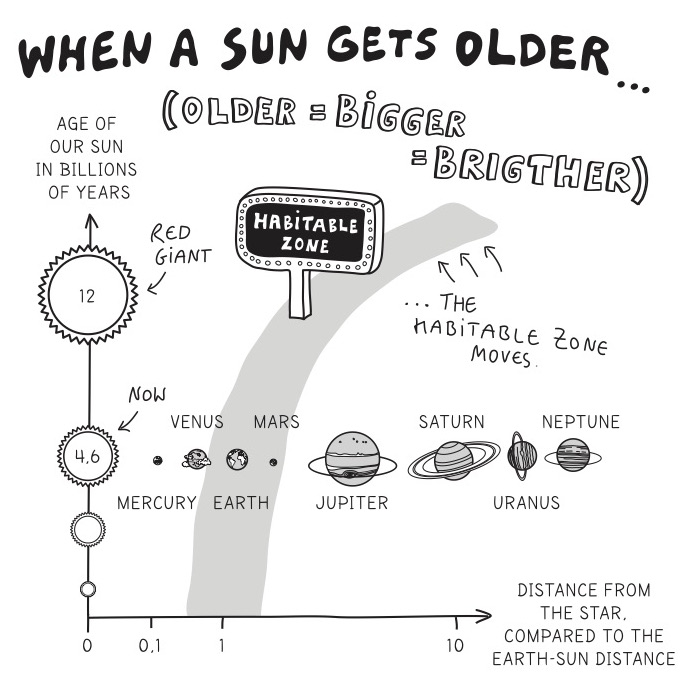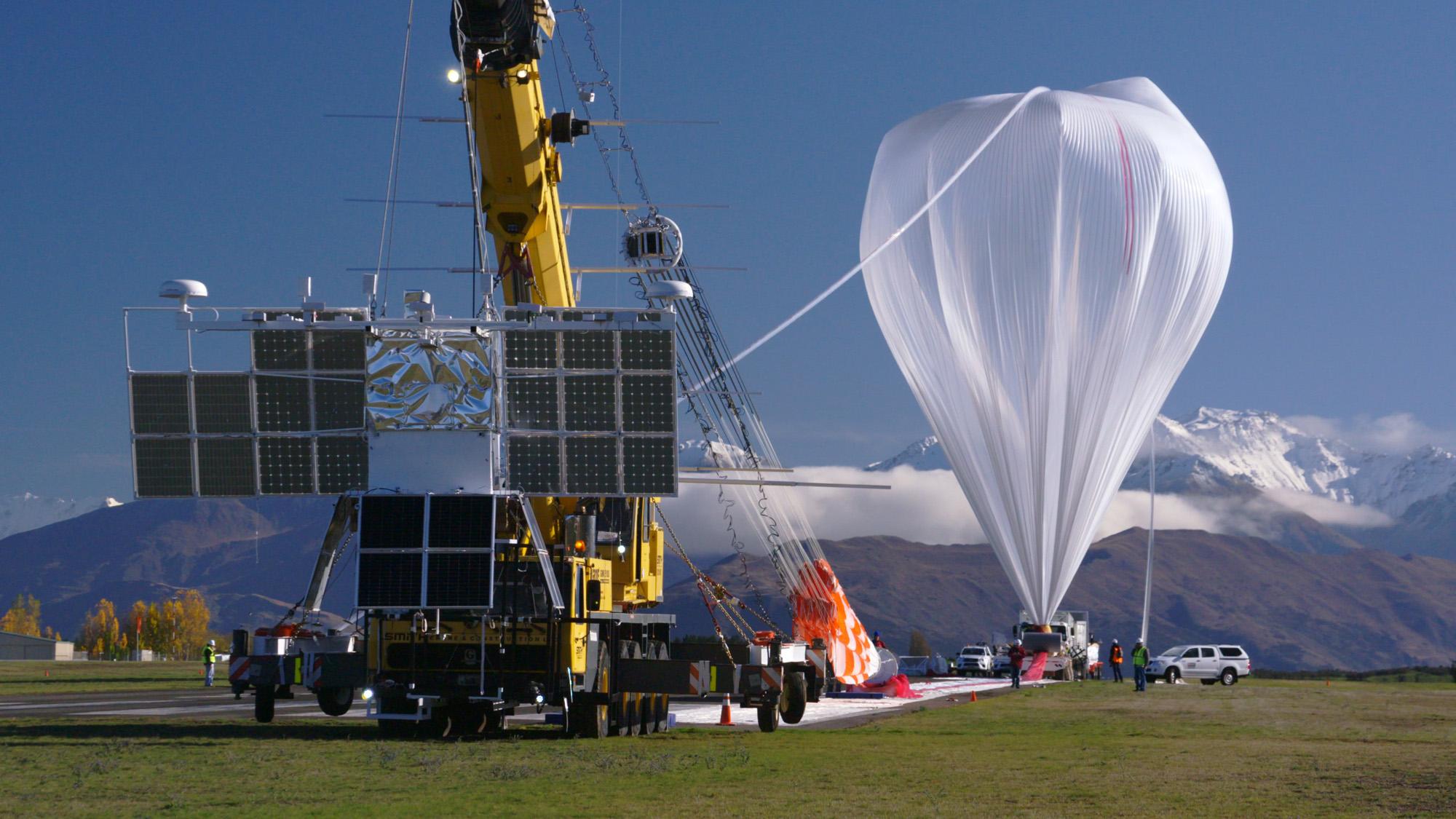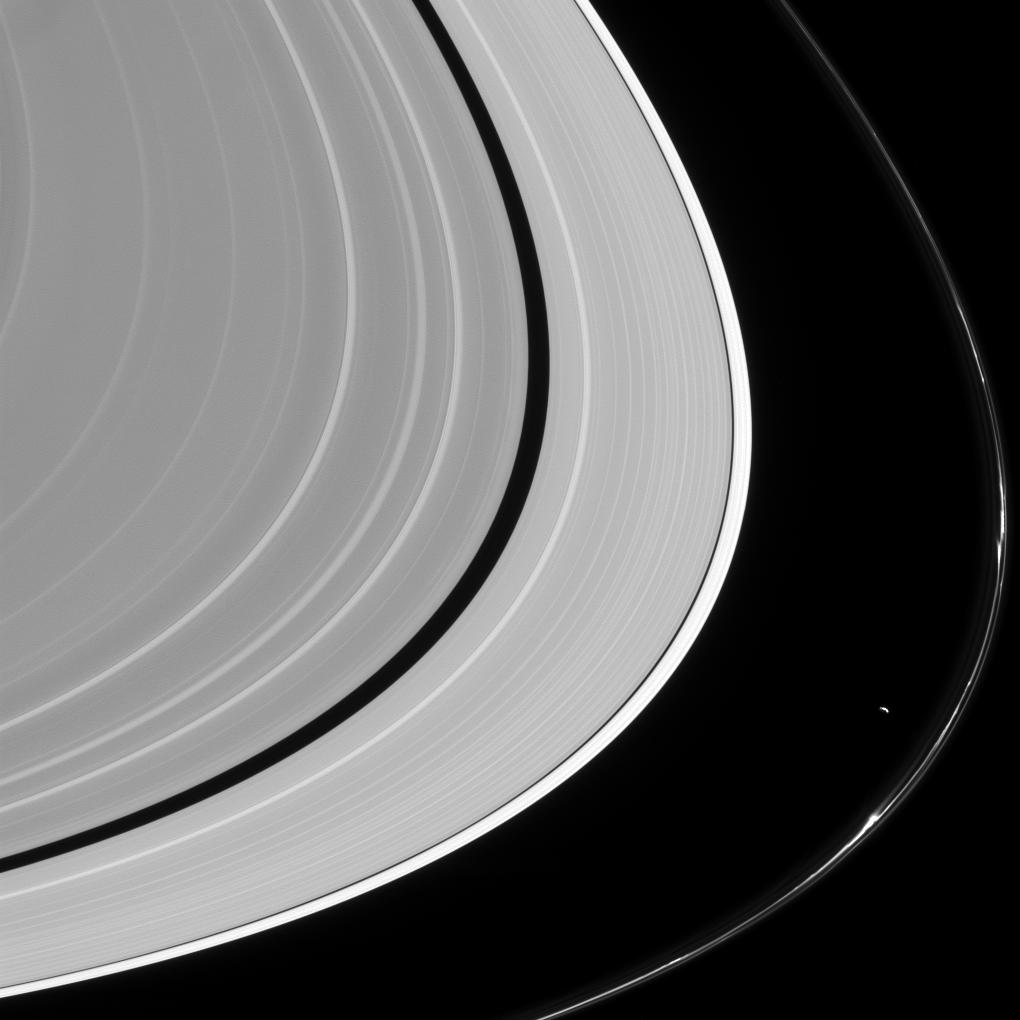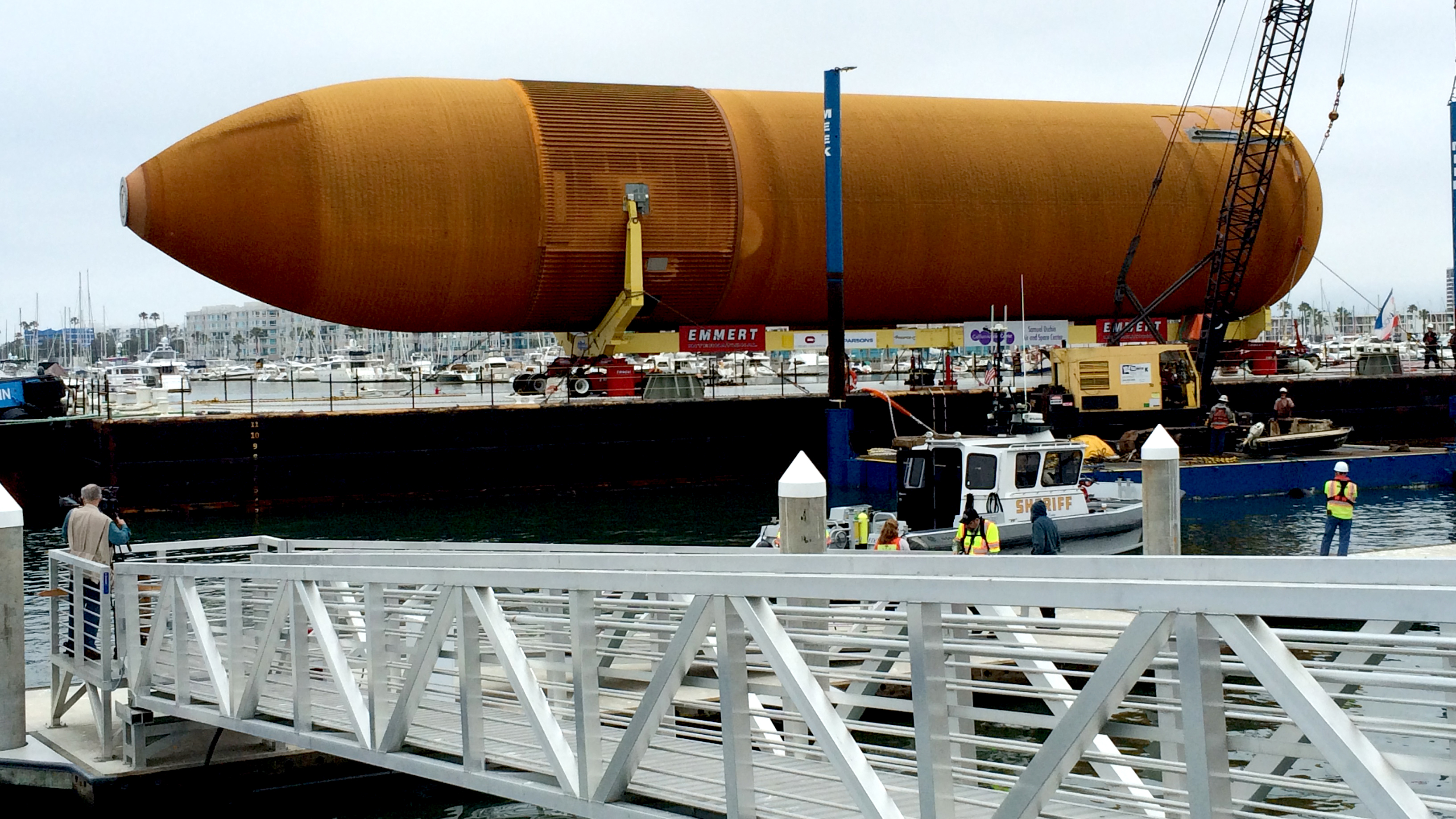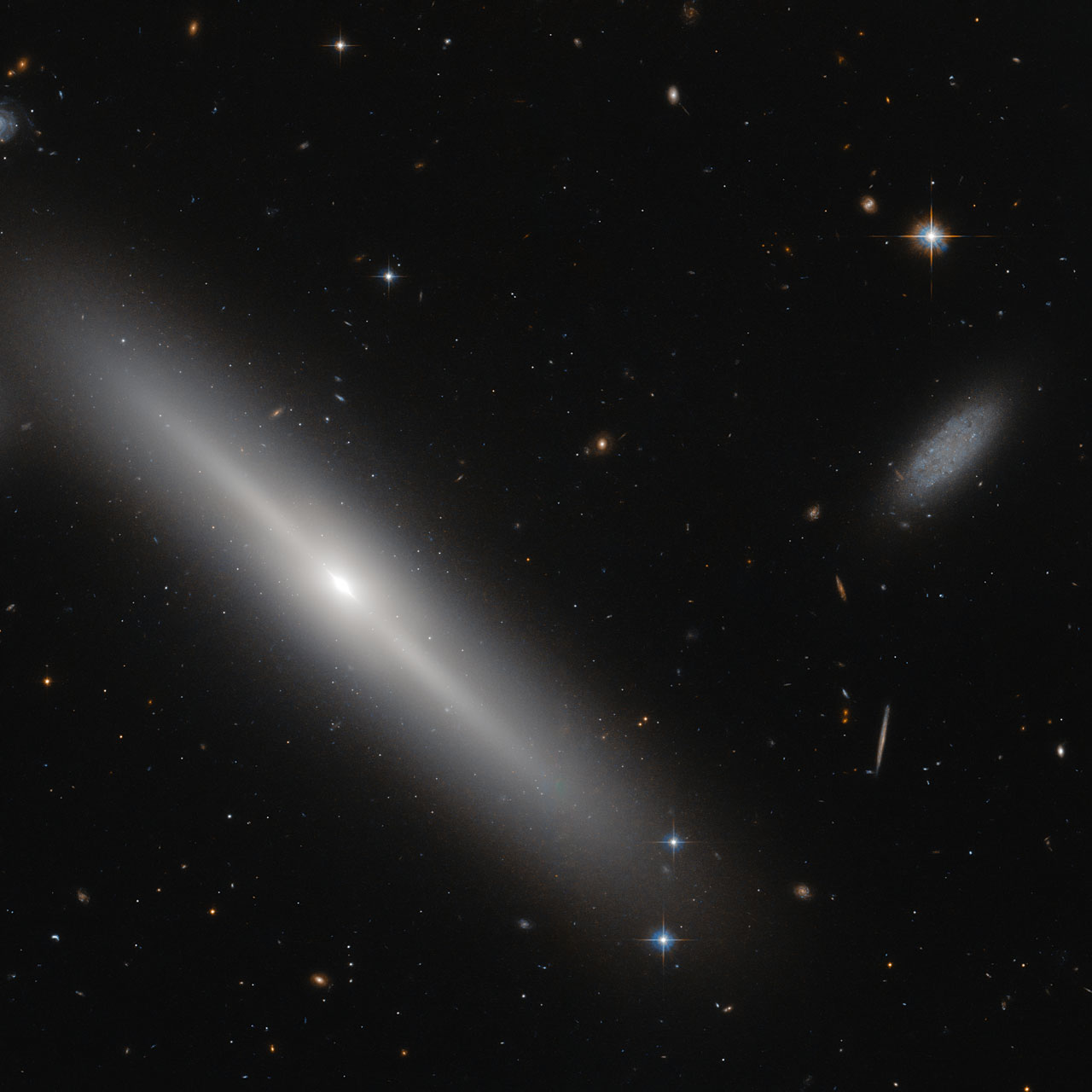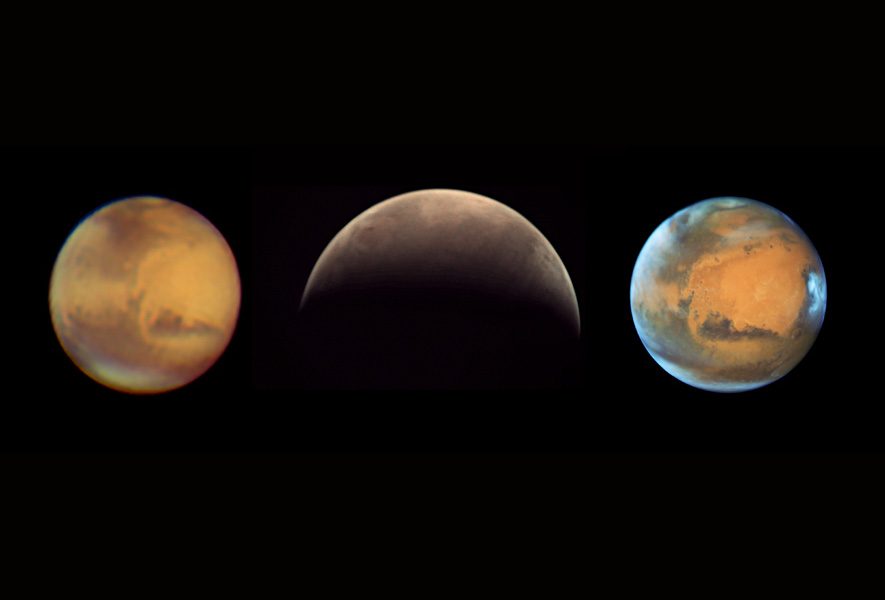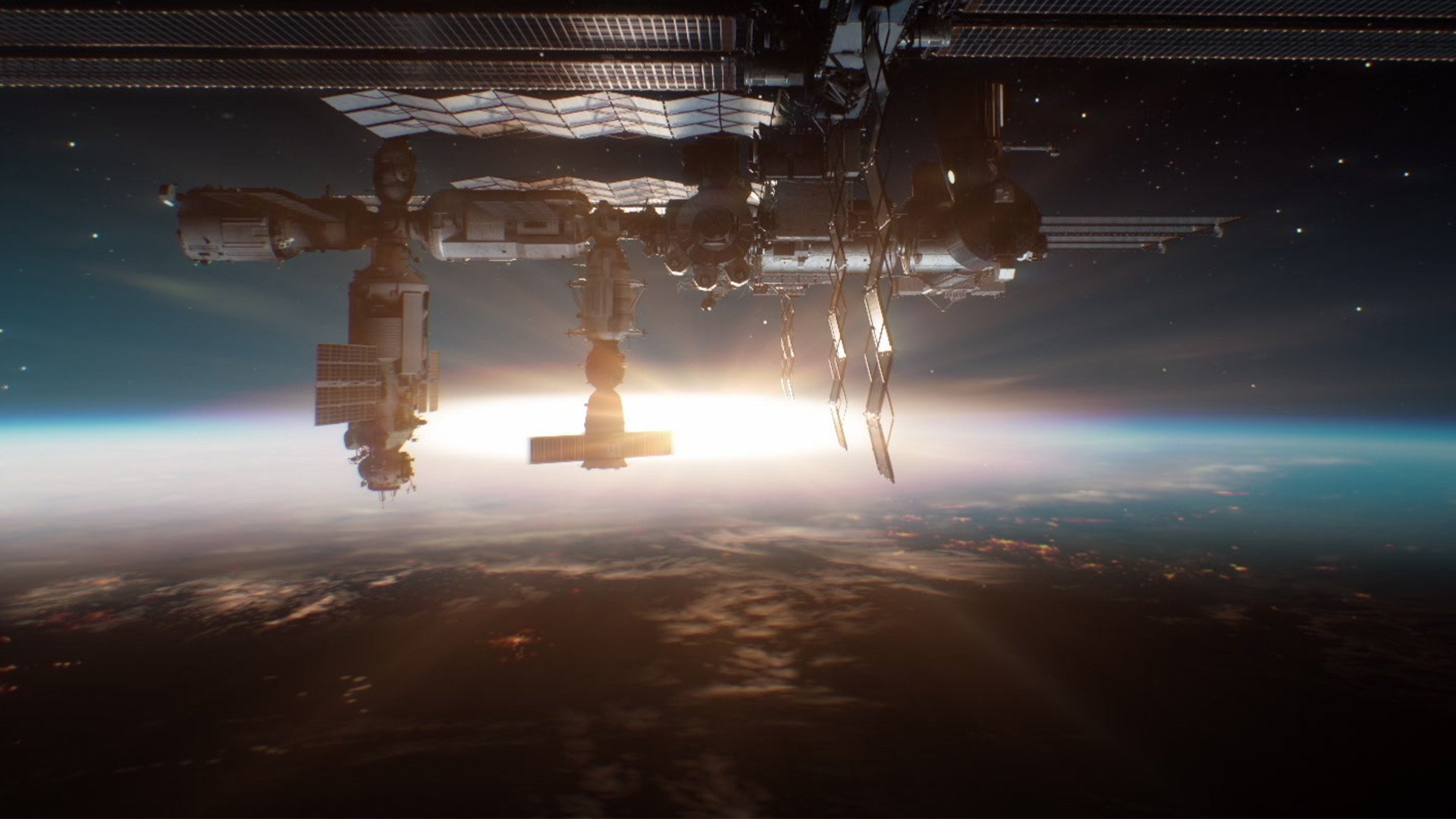Space Image of the Day Gallery (May 2016)
Radar Love from Sentinel 1B
Monday, May 16, 2016: The Norwegian archipelago Svalbard in the Arctic Ocean is seen in this first image from the Earth-observation satellite Sentinel 1B, which was launched into orbit on April 25 by the European Space Agency. This image, captured on April 28, covers a region about 373 miles (600 kilometers) long and 155 miles (250 km) wide. The image is dominated by the Austfonna glacier, which can be seen at top left. Sentinel 1B is part of a constellation of satellites designed to map Earth in unprecedented detail using advanced radar systems. The radar on each Sentinel satellite can see Earth's surface through clouds and rain, regardless of whether it is day or night. The mission is part of ESA's Copernicus environmental program.
-- Tariq Malik
Habitable Zone Whimsy
Tuesday, May 17, 2016: This whimsical comic by Mandy Fischer (adapted from "Are We Alone In The Universe, (Ecowin 2015)) shows how the "habitable zone" around the sun will change its location when the star expands into a red giant. The gray band shows the location of the habitable zone – the region in which liquid water can exist on the surface of a planet. The y-axis shows the sun's age. The x-axis shows the distance from the sun in astronomical units (1 astronomical unit is the distance from the sun to the Earth). As time progresses, the habitable zone moves further away from the star, which will increase its total energy output as it expands. The planets are drawn along the x-axis to show their distance from the sun. While the habitable zone currently contains Earth and Mars, it will eventually move out to contain the orbits of Jupiter and Saturn. Read our full story behind this image here.
-- Calla Cofield
NASA Superballoon, Activate!
Wednesday, May 18, 2016: A NASA super pressure balloon lifts off on a potentially record-breaking flight on May 17, 2016. The colossal balloon is carrying a gamma-ray telescope (called the Compton Spectrometer and Imager), but its main mission is to see if the "superballoon" can spend more than 100 days soaring 110,000 feet above Earth's mid-latitudes. Will the balloon make it? Only time will tell.
-- Tariq Malik
Prometheus, Saturn's Moon Sculptor
Thursday, May 19, 2016: Saturn's moon Prometheus (bright spot at right) sculpts the planet's F-ring, seen here at the far right, through its gravitational influence. NASA's Cassini spacecraft captured this image on Feb. 21, with NASA releasing it on May 17. Prometheus is a tiny moon of Saturn, and is about 53 miles (86 kilometers) wide. The moon exerts its gravitational influence on the F-ring as both orbit Saturn. Another moon that shapes the ring is Pandora (not seen here). Occasionally, Prometheus enters the F-ring, clearing out material and creating what scientists call a "gore" feature.
--Tariq Malik
ET-94: California or Bust!
Friday, May 20, 2016: NASA's last remaining space shuttle external fuel tank, ET-94, arrives at the port in Marina del Rey in Los Angeles on May 18, 2016. The 154-foot external tank will be ultimately placed on public display with the shuttle Endeavour at the California Science Center. Read the full story here.
-- Tariq Malik
A Hodgepodge Galaxy
Monday, May 23, 2016: Star clusters hover around a distant galaxy like bees around a hive in this latest featured image from the Hubble Space Telescope. It shows the edge-on galaxy NGC 5308, which is 100 million light-years from Earth in the constellation Ursa Major (The Great Bear). NGC 5308 is a so-called lenticular galaxy, meaning it is not quite a spiral and not quite elliptical. The galaxy wowed astronomers on Oct. 9, 1996, when the light from a dazzling Type Ia supernova, indicating a star's explosive death, was detected.
-- Tariq Malik
India Has a Space Plane
Tuesday, May 24, 2016: The Indian Space Research Organisation's first space plane prototype, called the Reusable Launch Vehicle-Technology Demonstrator, stands atop its HS9 solid rocket booster ahead of its debut launch - a successful test flight - on May 23, 2016 at the Satish Dhawan Space Center in Sriharikota, India. The test flight lasted 770 seconds and accelerated the unmanned space plane prototype up to Mach 5 as part of its controlled hypersonic flight trial. The RLV-TD did not reach space on this test flight, but did withstand enough significant heating to prove the viability of its thermal protection system. Read our full story on India's space plane test flight here.
-- Tariq Malik
Breaking space news, the latest updates on rocket launches, skywatching events and more!
Earth's Tallest Peaks, from Space
Wednesday, May 25, 2016: The Himalayas, the highest peaks on Earth, take center stage in this amazing photo from NASA astronaut Jeff Williams, who captured the oblique view from his home on the International Space Station. Williams took the photo on May 15, 2016 and posted it on Twitter (you can follow him @Astro_Jeff. "Up to the the amazing array of white peaks on the Himalaya Mountains," Williams wrote.
-- Tariq Malik
Mars at Opposition
Thursday, May 26, 2016: Three views of Mars at its best for 2016 take center stage in this collage of images by amateur astronomer Dylan O’Donnell (at left as seen from his home-built backyard observatory in Byron Bay, New South Wales), the European Space Agency's Mars Express spacecraft (center) and the Hubble Space Telescope at right. The images were all taken in mid-May 2016 to mark Mars' arrival at opposition on May 22, 2016.
-- Tariq Malik
To The Stars And Back
Friday, May 27, 2016: The Milky Way serves as an infinite vista in this amazing night sky view of a bride and groom in the White Mountains of New Hampshire. Photographer Charles Cormier took this space-themed wedding photo, which he calls "To the Stars and Back."
-- Tariq Malik
Join our Space Forums to keep talking space on the latest missions, night sky and more! And if you have a news tip, correction or comment, let us know at: community@space.com.

Space.com is the premier source of space exploration, innovation and astronomy news, chronicling (and celebrating) humanity's ongoing expansion across the final frontier. Originally founded in 1999, Space.com is, and always has been, the passion of writers and editors who are space fans and also trained journalists. Our current news team consists of Editor-in-Chief Tariq Malik; Editor Hanneke Weitering, Senior Space Writer Mike Wall; Senior Writer Meghan Bartels; Senior Writer Chelsea Gohd, Senior Writer Tereza Pultarova and Staff Writer Alexander Cox, focusing on e-commerce. Senior Producer Steve Spaleta oversees our space videos, with Diana Whitcroft as our Social Media Editor.

